Invoice Ninja is a robust open-source platform designed to simplify invoicing and financial management processes for businesses. It provides essential tools for generating invoices, managing finances, and tracking expenses, ensuring ease of use for both administrators and clients. Hetzner serves as a reliable hosting choice for Invoice Ninja, offering scalable infrastructure and straightforward deployment options. ServerAvatar facilitates a user-friendly experience for deploying the Invoice Ninja application on the Hetzner platform.
Create a Server in Hetzner
Getting Started with Hetzner:
Hetzner provides a range of services like dedicated hosting, virtual private servers, colocation services, and domain registration. Hetzner is known for having reliable systems and competitive prices in web hosting. Its services work well for both individual users and businesses that need strong hosting options.
Step 1: Login to Hetzner Cloud Console
- Go to the Hetzner Cloud website and sign in using your credentials.
Step 2: Create a New Project (Optional)
- If you don't have an existing project, create a new one by clicking on the New Project button.
![]()
- Enter a name for your project and click Add Project.
![]()
Step 3: Select a Project
- Select the project in which you wish to create your server.
![]()
Step 4: Create a New Hetzner Cloud Server
- Navigate to the Servers sub-menu and click on Add Server to begin creating your server.
![]()
Step 5: Configure your server
-
Select a Location: Select the data center location where you want to deploy your server. Choose the region that is closest to your target audience for better performance.
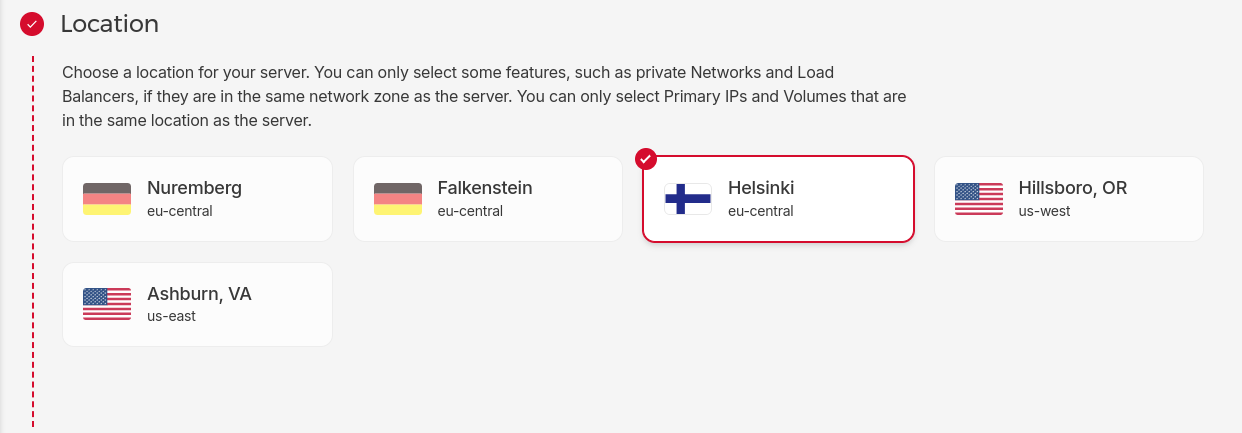
-
Select an Image: ServerAvatar supports both Ubuntu 20.04 and Ubuntu 22.04. Therefore, choose one of these supported operating systems.
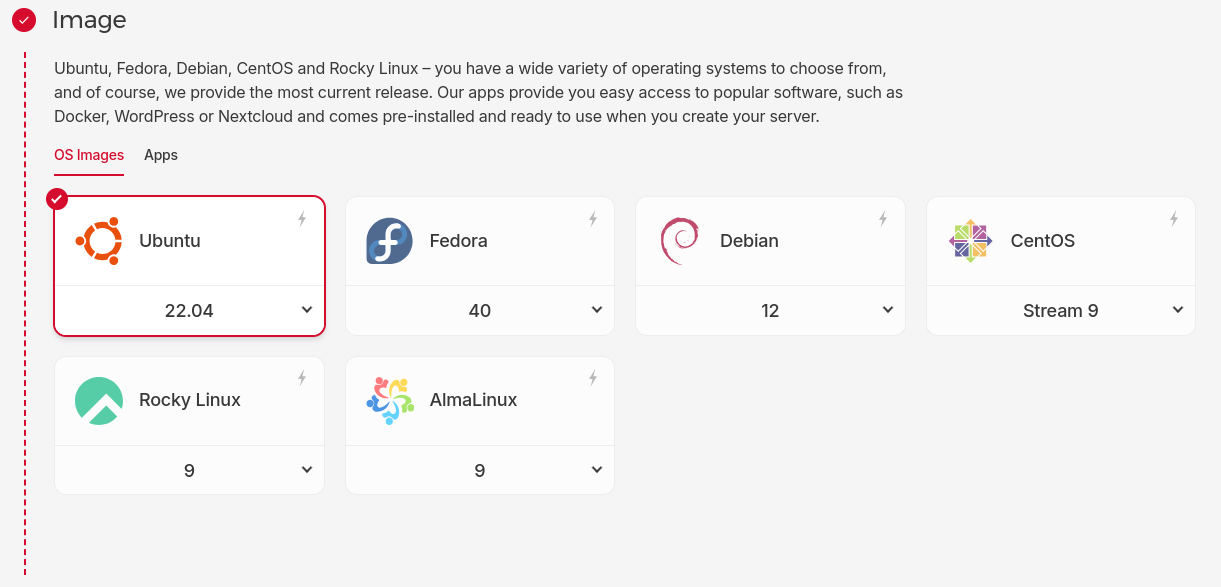
-
Select a Server Type: Hetzner provides various plans with different configurations of CPU, RAM, and storage. Select the server type based on your requirements. To host Invoice Ninja, at least 2GB or more of RAM for better performance and 1GB of free disk space is required for initial setup, and additional space is needed for data. The total amount of space required will vary based on your usage and storage needs.
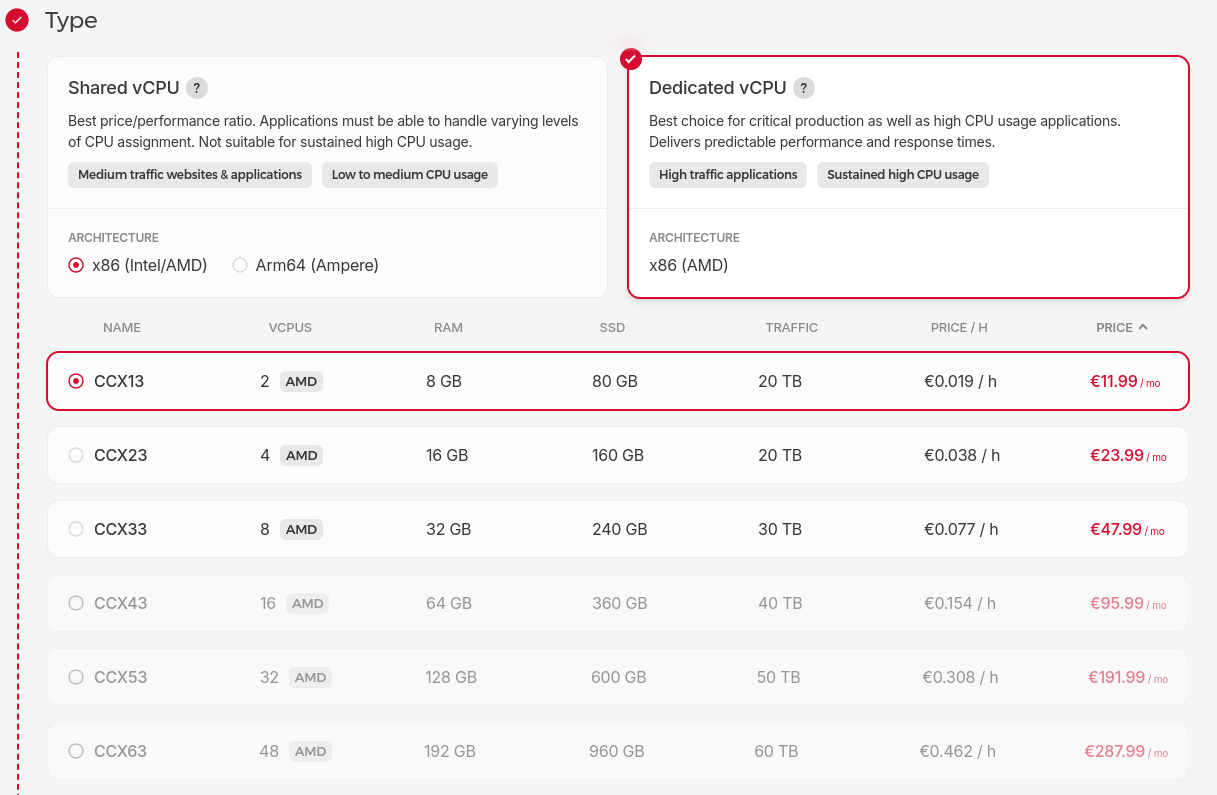
-
Select Networking: Select from three networking options for your server. Private networks allow you to securely connect servers within the same data center without going over the public internet.
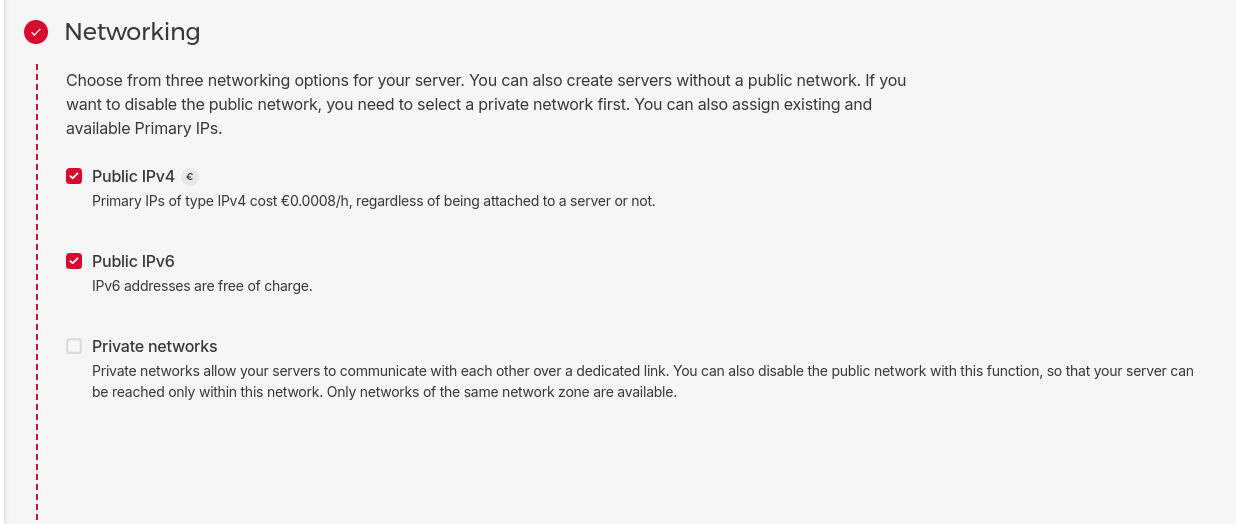
-
SSH Key or Root Password: Select an SSH Key if you want to authenticate with an SSH key. This method is recommended over using a root password for enhanced security. If you choose SSH key authentication, Hetzner will disable password-based authentication by default. Otherwise, you will receive the root password via email.
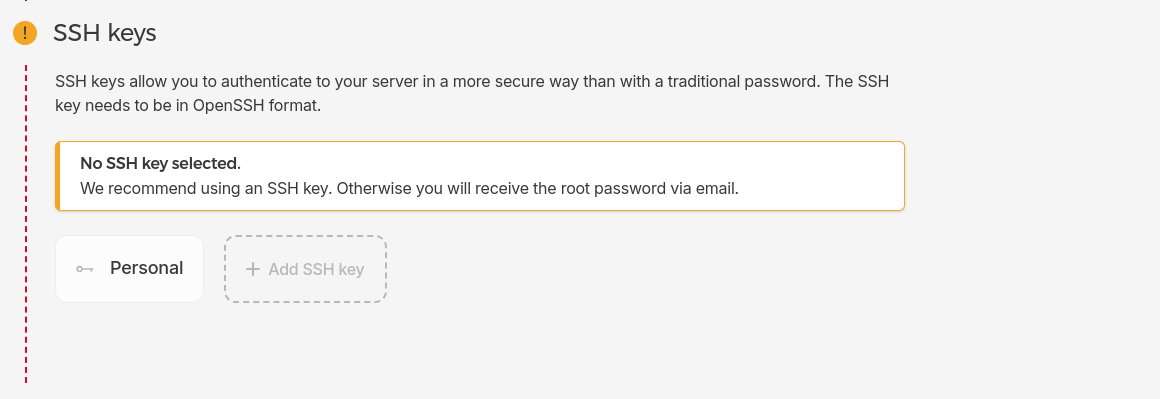
-
Add a Firewall Rule: Configure firewall rules to control incoming and outgoing traffic based on IP addresses, ports, and protocols for improved security.

- Additional Options (Optional): Configure additional options such as Backups, Placement Groups, Volumes, Labels, and Cloud Config as per your Requirements.
-
Give a Server Name: Enter a server name for easy identification.

-
Finalize and Create: Review your configuration settings to ensure that everything is configured correctly. Click on the Create & Buy Now button.9. Finalize and Create: Review your configuration settings to ensure that everything is configured correctly. Click on the Create & Buy Now button.
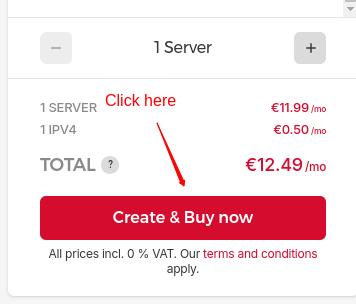
Step 6: Access Your Server
- Once the server is deployed, it will appear on your Hetzner Cloud dashboard. Use the provided IP address and SSH key (if configured) to access your server via SSH. Now, You can connect your Server with ServerAvatar for Server management.
![]()
Initial Server Configuration
The Initial server configuration includes the installation and configuration of various packages required to host your website. Usually, You have to write commands and modify configuration files. Luckily, With ServerAvatar, Your full server configuration and optimization can be automated.
Here are the three ways to automatically configure your server with ServerAvatar.
Connect a server using a direct method
- Login/Register to ServerAvatar account, click the Create button from the right side of the screen, and select Server from the dropdown.
- Select Direct Method in the serve connecting method section.
- Type the Server Name as per your choice.
- Select a Tech Stack as per your need. You can either select Apache, Nginx, OpenLiteSpeed or Node Stack.
- Select a Database: MySQL, MariaDB or MongoDB.
- Enable the toggle if you want to install the latest LTS version of node.js on your server.
- Select a Management plan and click the Connect Now button.
- You’ll see the command on your screen. Login to your server using an ssh connection and execute that command as a root user.
- The server connection process will be started on your ServerAvatar account after executing the command.
Connect a server using integration
- Login/Register to your ServerAvatar account, navigate to the Integration tab from the sidebar of the panel, and access Cloud Platform from the dropdown.
- Now Select a cloud platform you want to link with ServerAvatar.
- The popup form will appear on your screen. Enter details to link your cloud provider account. The integration method is different based on the cloud provider you select.
- You can integrate five different cloud provider platforms with ServerAvatar, which is-
Check the above link of cloud platforms to know more about integrating cloud platforms with ServeAvatar.
Connect a server using commands
Step 1. Login to your server using root user
Once you create a server as per your requirements, connect to your server using an ssh connection and execute the below three commands as a root user in your server console area.
wget https://srvr.so/install
chmod +x install
./install
Step 2. Select a web server
It will ask you which web server you would like to install on your server: Apache, Nginx, OpenLiteSpeed or Node Stack. Type anyone that you would like to install on your server and hit the enter button.
Step 3. Claim your server
Completing the process will give you a link to claim your server.
Open the link on your browser to access the ServerAvatar server panel.
Install and Setup Invoice Ninja on Cloud Using ServerAvatar
Step 1: Create Database
Access the Databases tab on the ServerAvatar server panel to create a MySQL Database.
![]()
Enter the credentials and click on the Create Database button.
![]()
Step 2: Change PHP-CLI Version
Deploying InvoiceNinja on the server requires PHP-CLI Version 8.1 or above at the server level. To configure the PHP-CLI version, follow the Snapshot.
![]()
Step 3: Create PHP Application
Access the Applications tab from the server panel to create a new PHP application.
![]()
Fill up the required information, including the Application Name, Domain Name, and Advanced Options for more PHP settings.
![]()
Proceed to next by clicking on the Next Step.
Now select method and service provider Git and GitHub, respectively (follow according to Snapshot)
![]()
Enter the required information as given below:
Repository Type: Public
Clone HTTPS URL: https://github.com/invoiceninja/invoiceninja.git
Branch: v5-stable
Deployment script:
git checkout v5-stable;
cp .env.example .env;
composer i -o --no-dev
php artisan key:generate
![]()
Move further by clicking on the Next Step.
Create a System User or choose a system user from an existing One.
Then choose PHP version 8.1 or above; the custom webroot should be Public as in the given Snapshot.
Custom Webroot: Public
![]()
Then, click on the Create Application button.
Step 4: Connect Database
go to the File Manager tab from the sidebar of the application. And access the public_html folder
![]()
Now check the Show Hidden Files box to access the .env file to change to the original database credentials.
![]()
Change the following configuration to establish a connection with the database.
DB_DATABASE= Database_Name
DB_USERNAME= Database_Username
DB_PASSWORD=Database_Password
to access database credentials, go to the Database tab from the sidebar of the server panel and click the database that we created in the first step.
![]()
that's all, open your application URL in the web browser to access the Invoice Ninja setup page.
![]()
Tip: ServerAvatar provides a one-click solution for installing an SSL certificate on your domain. To install SSL, go to the application panel and click the SSL Certificate button to install automatic SSL in your application domain.